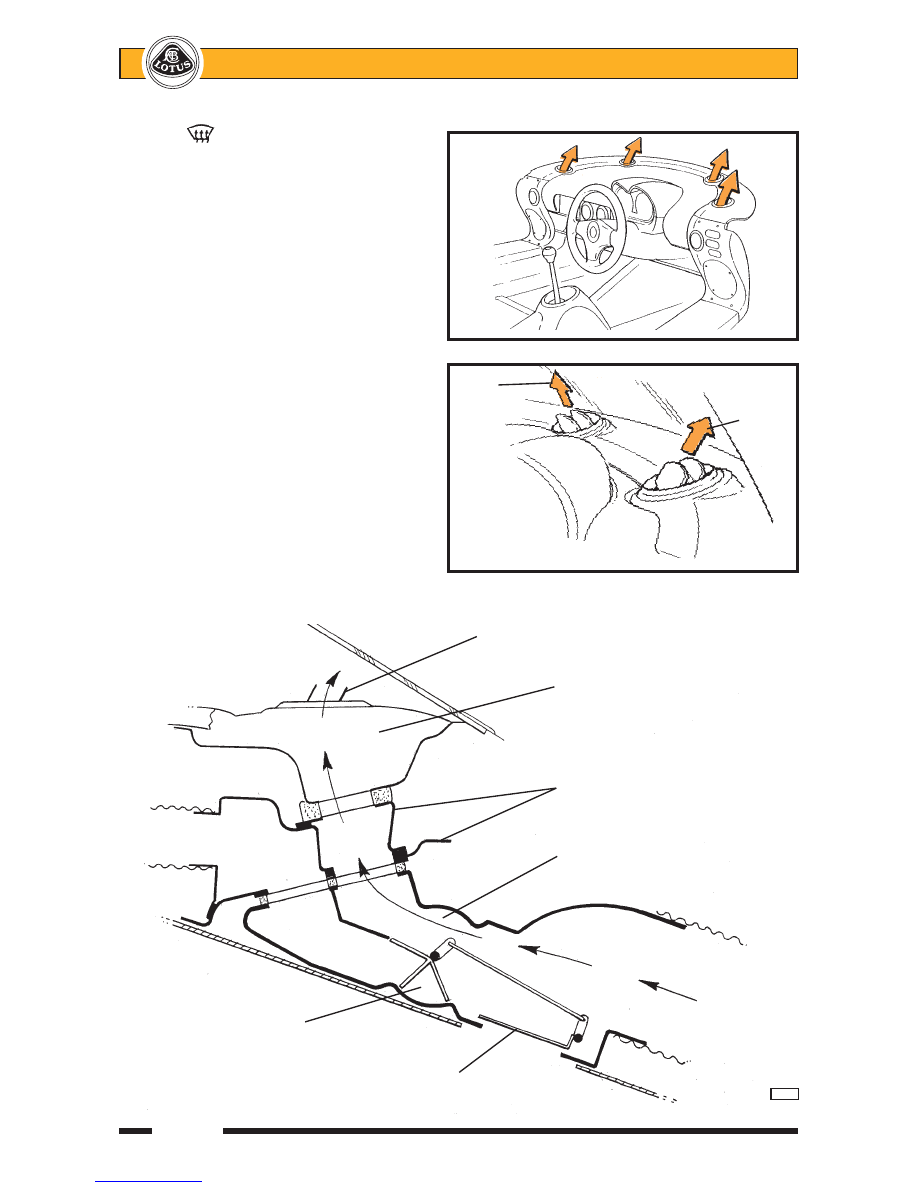Lotus Elise / Lotus Exige. Instruction - part 99

Lotus Service Notes Section PL
Page 10
Demist:
As the control is turned clockwise from
the face level vents symbol towards the
footwell symbol, the stepper motor turns the
rotary flap to progressively open the wind-
screen vents. The rod connecting the rotary
flap to the footwell flap is arranged to close
the footwell vents in opposite proportion, until
at the screen symbol, all airflow is directed to
the windscreen. Select a warm temperature
setting and a suitable fan speed.
Full Defrost Performance
For maximum defrost performance, turn
the distribution knob fully clockwise and se-
lect maximum temperature and fan speed. On
cars with adjustable windscreen vents, direct
the centre pair of screen vents slightly rear-
wards, and the end pair of vents forwards as
shown in the illustration.
Ventilation Shut-Off
To close off the ventilation, which may
be desirable in heavy traffic to reduce the in-
duction of fumes into the car, turn off the fan,
turn the distribution control fully
counterclockwise to the face level vent posi-
tion, and instructionly shut off each of the face
level vents.
FULL DEFROST
PERFORMANCE
ohs98
Inner
Outer
vent
vent
direction
direction
Windscreen vent
Demist duct in
fascia top panel
Scuttle baffle panel
Windscreen port open
From
climate
Face level port closed
chamber
Footwell flap closed
p102c